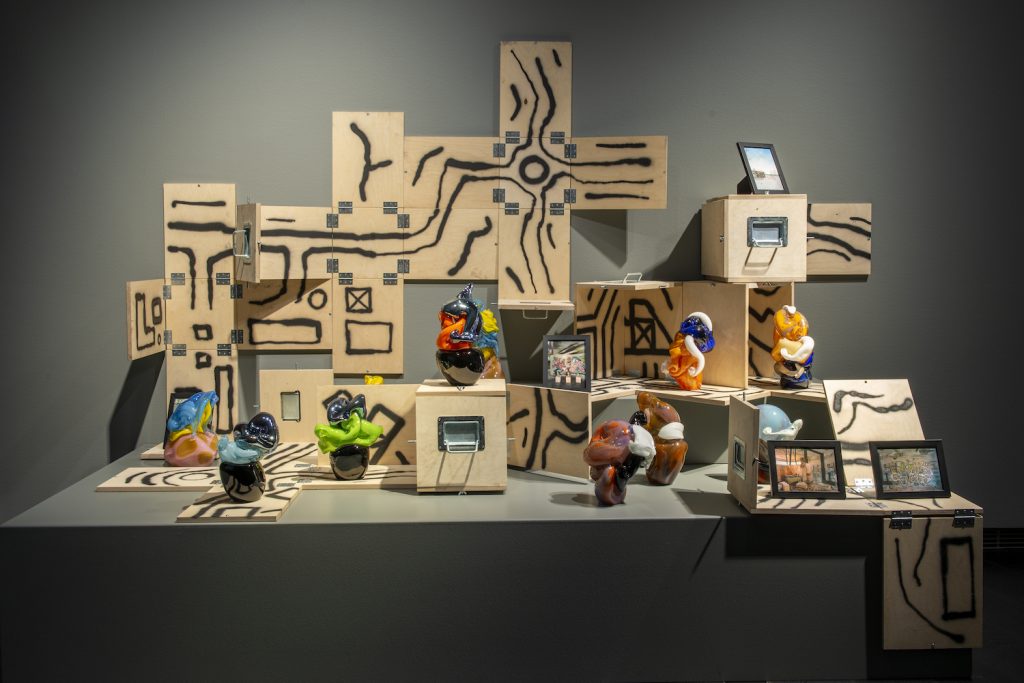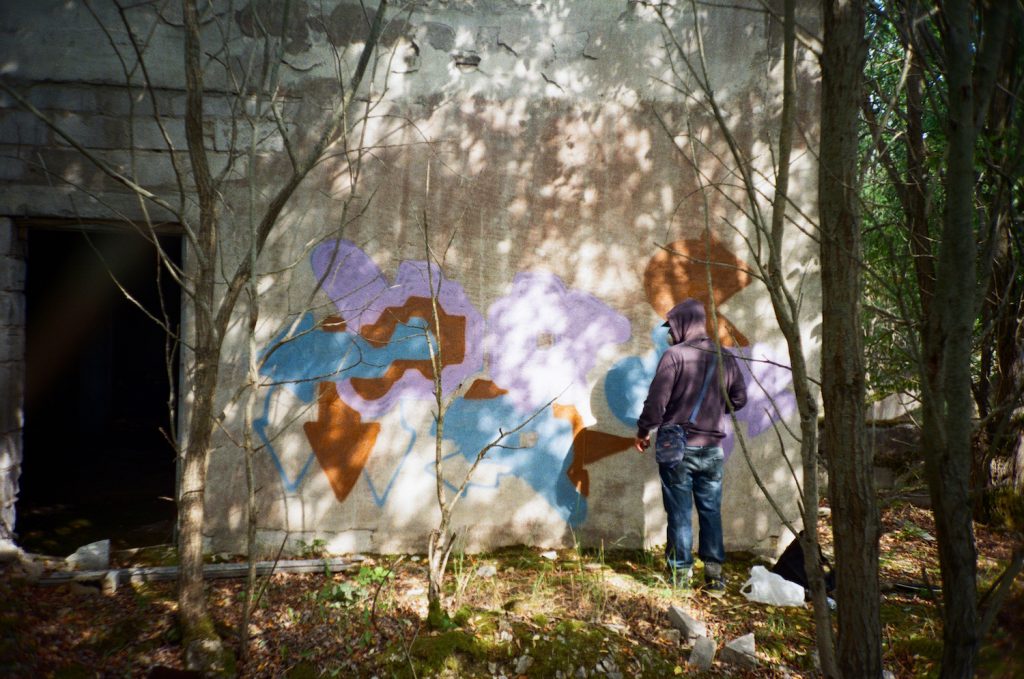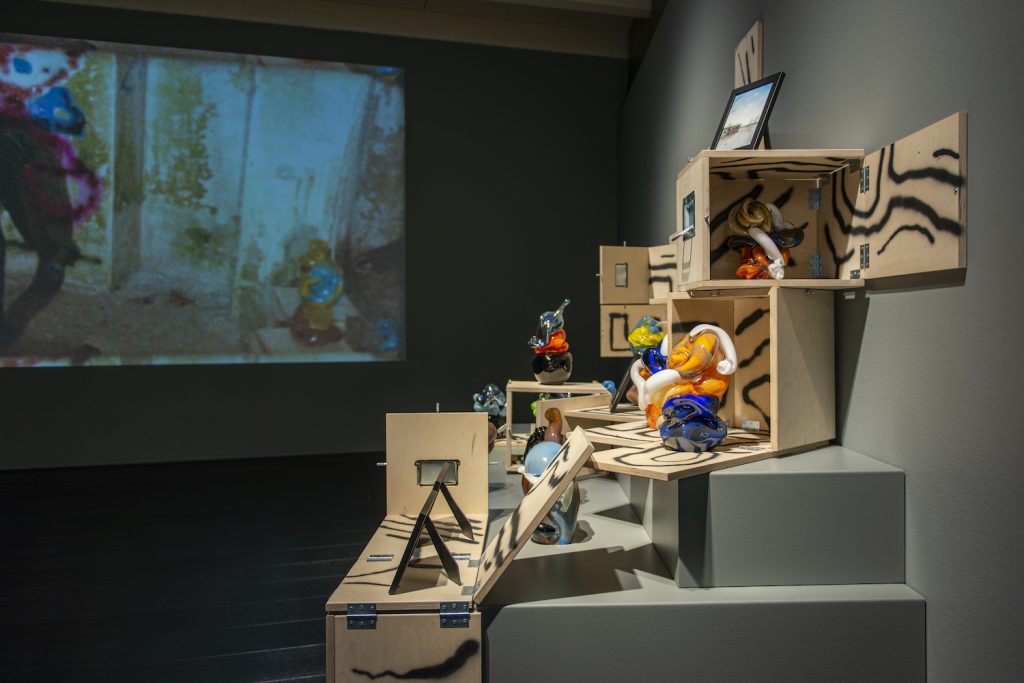EGS: This Could Go on Forever
APRIL 2023
Renowned as graffiti artist, EGS (b. 1974) has been implementing his work process This Could Go on Forever since 2021. Eponymous exhibition displayed at Serlachius Museums 24 Sep 2022–5 Mar 2023 was the first installation of the set of works which, after the exhibition closed, was acquired for Gösta Serlachius Fine Arts Foundation’s collection. This Could Go on Forever combines the core themes from the artist’s oeuvre, such as travelling, history, power and freedom.
The idea behind the work process This Could Go on Forever is basically simple: you travel to remote areas of Estonia, search for an abandoned Soviet era building or its ruins and paint graffiti there. This process is documented before returning to Finland. Based on photographs and an 8-mm film a three-part glass sculpture is created in Riihimäki a town in Finland. This sculpture is packed in boxes and taken on a new trip to Estonia, this time to another region. Inspired by the sculpture new graffiti is painted. After having photographed it, you return to Finland to create a new glass sculpture based on it. This process could go on indefinitely, which is also implicated in the English title.
This Could Go on Forever is highly conceptual work which challenges the perceptions of the essence of an artwork. The actual artwork is neither graffiti painted on a wall of a ramshackle building nor its the pictorial documentation. Glass sculptures are, of course, artworks in themselves, but in this case the process of the work in all its dimensions constitutes the authentic artwork. The installation showcased in the Serlachius Museums consisted of a projected substandard film, glass sculptures with their transport boxes as well as sketches created during the trip and documentary material collected from the painting sites. However, even this entity is only one way to present the process of the work.
One of Finland’s internationally most successful graffiti artists, EGS has also repeatedly addressed difficult, politically flavoured themes in his work. From his own personal history, the artist focuses on social sore points and contextualises current issues by linking them to recent history. This Could Go on Forever takes a look at Estonia’s recent past and, in particular, to the turning point of the country’s re-independence.
EGS’s project brings a new life to the forgotten ruins of remote areas. At the same time, the center of attention was put on smaller stories of individual human destinies, which are easily overshadowed by the larger narratives of history. For example, the collapse of the Soviet Union was certainly a change for the better, but it may also have had a devastating effect on the lives of individuals. The transition to the digital age may be seen as a blessing by the majority, but in many factory locations its effects – from unemployment to empty businesses and social problems – can also be undesirable. The questions posed by EGS’s art project in Estonia are also appealing when looking at the ruins of Finnish structural change.
Tomi Moisio
Curator




